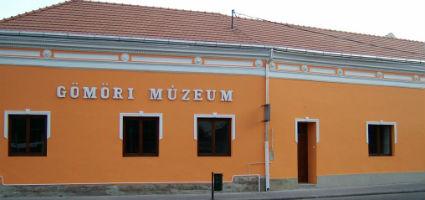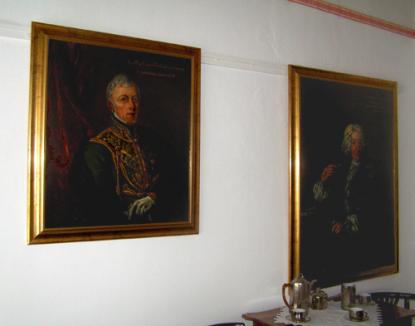2025. January 2. Thursday
Gömör Museum - Putnok
 |
Address: 3630, Putnok Serényi László tér 10
Phone number: (48) 430-292
E-mail: gomorimuz@gmail.com
Opening hours: *Mon-Fri 8.00-16.00, Sat 10.00-14.00
|
Museum tickets, service costs:
|
Ticket for adults
|
400 HUF
|
|
|
Ticket for students
|
200 HUF
|
|
|
Ticket for pensioners
|
200 HUF
|
The family acquired the estate in Putnok through marriage. The baroness Orlay Borbála married the count Serényi András sometime in 1670-1674 and all the wealth of the Orlay family was taken over by the Serényis. Their son, Farkas, born in 1685, worked as an overseer of the estate of Gömör County for decades. However, he neither lived in Putnok nor Gömör but in the castle of Záblát.

In consequence of the fight with the Turkish and the epidemics that are linked to her and her mother, the population decreased. Some towns like Putnok and Málé that became depopulated at these times were repopulated. The process began in 1713 and ended in 1759. To Málé, now called Serényfalvára, people of Slovakian origin were moved in from Trencsén and Csicsmány. To Putnok people from Moravia were moved in. The refunding of the Catholic church of Putnok is also connected to these times.
The count Serényi Farkas, the overseer, visited Putnok many times. Until the 19th century, the tradition existed in the family that the young counts became independent. Before overtaking an estate, they practiced farming in Putnok. The count László arrived after his brother Alajos in 1845. He renovated the castle that his brother had built and also built a park around a castle. After the death of his wife, he had a burial vault built around the castle following the plans of Ybl Miklós. The count László made history in Putnok other ways as well. He created an excellent state farm. He was also a public persona who always tried to help development.
The count László left Putnok to his son, the Budapest born Béla (1866-1919). He, just like his father, was interested in public life. Béla, who was a lawyer, also a PhD, was so successful in politics that he became a minister of Agriculture and Commerce. He spent most of his time in Budapest. Still, people talk of him as the Széchenyi of Putnok.
The Serényi family left Putnok in 1944. Their estates were nationalized. It was not right to mention the name of the family for a long time. Until the 1980’s the situation did not change. In 1991, public institutions took on the name of the family that did a lot for Putnok.

In consequence of the fight with the Turkish and the epidemics that are linked to her and her mother, the population decreased. Some towns like Putnok and Málé that became depopulated at these times were repopulated. The process began in 1713 and ended in 1759. To Málé, now called Serényfalvára, people of Slovakian origin were moved in from Trencsén and Csicsmány. To Putnok people from Moravia were moved in. The refunding of the Catholic church of Putnok is also connected to these times.
The count Serényi Farkas, the overseer, visited Putnok many times. Until the 19th century, the tradition existed in the family that the young counts became independent. Before overtaking an estate, they practiced farming in Putnok. The count László arrived after his brother Alajos in 1845. He renovated the castle that his brother had built and also built a park around a castle. After the death of his wife, he had a burial vault built around the castle following the plans of Ybl Miklós. The count László made history in Putnok other ways as well. He created an excellent state farm. He was also a public persona who always tried to help development.
The count László left Putnok to his son, the Budapest born Béla (1866-1919). He, just like his father, was interested in public life. Béla, who was a lawyer, also a PhD, was so successful in politics that he became a minister of Agriculture and Commerce. He spent most of his time in Budapest. Still, people talk of him as the Széchenyi of Putnok.
The Serényi family left Putnok in 1944. Their estates were nationalized. It was not right to mention the name of the family for a long time. Until the 1980’s the situation did not change. In 1991, public institutions took on the name of the family that did a lot for Putnok.
